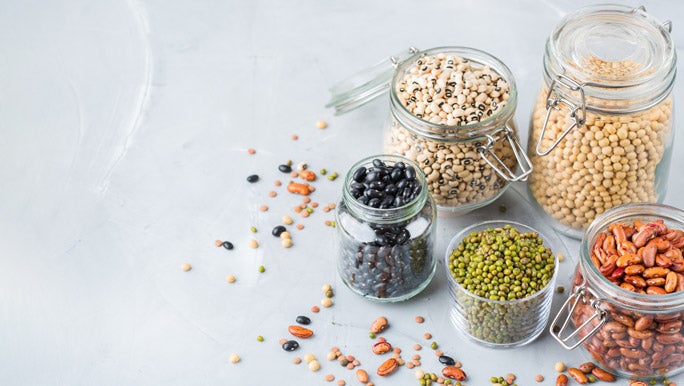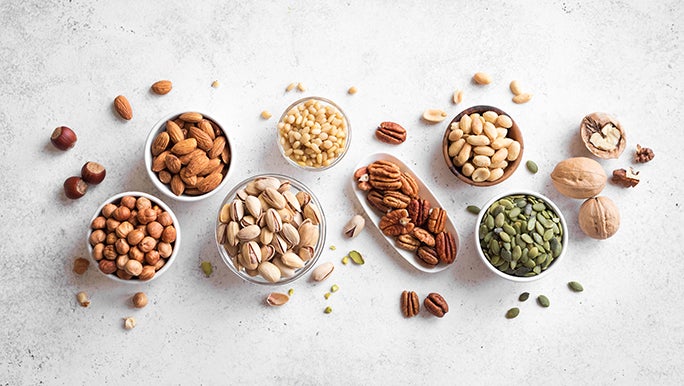How to get more high protein vegetarian foods in your diet

Key points
- Protein requirements vary among different people.
- Preparing high protein vegan meals may require a bit more planning than non-vegan meals.
- Protein plays an important role in the body, so we need to try to get enough of it.
When you mention protein, most people think of meat. And yes, meat is generally considered a good source of protein. But if you’re vegetarian or vegan, that’s not very helpful at all.
Even if you’re a meat-eater and looking for more flexitarian meal ideas, getting your head around high protein vegetarian foods isn’t a bad thing to do. After all, variety is the spice of life. And even David Attenborough follows a somewhat flexitarian diet!
More than just variety, there’s also potential health and environmental benefits to following more of a plant-based diet with less animal products.
Dietitian and healthylife Chief Health Officer, Simone Austin shares her insights into the question of protein for vegans and vegetarians to ensure you’re getting enough of the right nutrients in your diet.
Daily protein requirements
We often talk about how many servings of vegetables per day we need to eat, but what about macronutrients like protein?
Simone says it’s not a simple case of making a blanket recommendation of how much protein a person needs to eat.
“If you look at elite athletes, for instance, they will likely have a greater protein requirement. They want to build and repair muscle, so they’ll include protein in their main meals and their snacks,” she says, “Protein requirements are also higher during pregnancy and for the elderly. As you get older, your body doesn’t use protein effectively, so you actually need to eat more.”
With that in mind, it’s important that you understand your individual protein requirements. The Australian Government has produced this handy online calculator. It’s just a general guide and could help you figure out how much protein you may need.

Some great high protein vegan foods include legumes and lentils.
The protein challenge for vegans and vegetarians
If you’re not going to eat meat, how are you going to replace your protein?
This is the question that Simone suggests vegans and vegetarians ask themselves.
“If you’re worried about getting enough protein, first look at what foods you’re removing from your diet. By removing those foods, what nutrients are you removing? And how are you going to replace them?” she says.
But there’s good news for vegetarians and vegans. Research has shown that classic vegetarian diets could offer enough protein.
How do vegans get protein?
So how could you eat enough of those high protein vegetarian foods to hit your protein macros each day?
Simone says that the plant-based and vegan difference may influence the way you get your protein.
“Eating a plant-based or vegetarian diet is probably a little easier than for vegans because you could have some of the non-meat animal products that are still high in protein,” she explains.
Some great high protein vegan foods include:
- legumes and lentils
- nuts and seeds
- high protein vegetables in season such as peas or edamame
- soy-based products such as tofu or tempeh
Vegetarians can also enjoy protein sources such as:
- eggs
- cottage or cheddar cheese
- Greek yoghurt
Simone says that preparing high-protein vegan meals may just require a bit more planning.
“If you want to have an apple, you could easily turn this into a high protein vegan snack by eating it with some nut butter. You could even add a handful of nuts or a glass of soy milk,” she says.

As you get older, your body doesn’t use protein effectively, so you actually need to eat more.
The power of protein
Protein plays an important role in the body in everything from supporting muscle growth to helping with bone health. That’s why it’s important that we try to get enough of it.
So, while thinking about how to encourage your child to eat vegetables, consider your own vegetable protein intake too.
And if you have any dietary concerns, be sure to speak to your medical practitioner.
Related:
- Protein, what is it good for? Lots of things!
- Are fermented foods the key to good gut health?
- Worried about farting too much? So is everyone else
Simone Austin is an accredited Practising Dietitian, an Advanced Sports Dietitian and President of Sports Dietitians Australia. Her passion for optimising sports performance and health through nutrition has led Simone through her 25+ year career working with some of Australia’s top sports teams.
Reviewed by the healthylife Advisory Board September 2021.